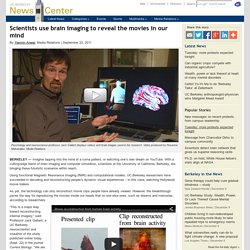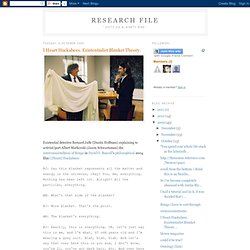

Emotion Wheel Theory - Robert Plutchik. Cancel Edit Delete Preview revert Text of the note (may include Wiki markup) Could not save your note (edit conflict or other problem).

Please copy the text in the edit box below and insert it manually by editing this page. Upon submitting the note will be published multi-licensed under the terms of the CC-BY-SA-3.0 license and of the GFDL, versions 1.2, 1.3, or any later version. See our terms of use for more details. Add a note Draw a rectangle onto the image above (press the left mouse button, then drag and release). Save To modify annotations, your browser needs to have the XMLHttpRequest object. [[MediaWiki talk:Gadget-ImageAnnotator.js|Adding image note]]$1 [[MediaWiki talk:Gadget-ImageAnnotator.js|Changing image note]]$1 [[MediaWiki talk:Gadget-ImageAnnotator.js|Removing image note]]$1.
How am I not myself? These heat maps reveal where we feel love, anger, shame & sadness on our bodies. Scientists have conclusively proven that love gives you the warm fuzzies and sadness makes you feel blue.

A team of Finnish researchers have created heat maps of where and how emotions are experienced on the human body. The goal of the study was to find out if there is a consistent connection, across various demographic groups and geographical regions, between what we feel and the physical sensation of that feeling. “Even though we are often consciously aware of our current emotional state, such as anger or happiness, the mechanisms giving rise to these subjective sensations have remained unresolved.
Here we used a topographical self-report tool to reveal that different emotional states are associated with topographically distinct and culturally universal bodily sensations; these sensations could underlie our conscious emotional experiences,” the findings said. Happiness shows yellow and red coloring all over, with the strongest feelings in the head and chest. The appearance of new phantom fingers post-amputat... [Neurocase. 2012.
No Fear in the Now. Internet_map_4096.png (PNG Image, 4096×4096 pixels) - Scaled (15. Plants and fungi play the 'underground market' Science 12 Aug 11 Micrograph of fungi colonising roots of plant host, Medicago truncatula.

Image: Jan Jansa Plants and fungi co-operate and trade with each other on a biological ‘underground market’, changing their trading partners if they don’t get a fair deal. The finding was made by an international team, including Oxford University scientists, examining how plants trade energy-rich carbohydrate they make using photosynthesis for phosphorus fungi collect from the soil. A report of the research is published in this week’s Science. ‘This is one of the first recorded examples of a ‘biological market’ operating in which both partners reward fair trading rather than one partner having the advantage and exploiting the other,’ said Professor Stuart West of Oxford University’s Department of Zoology, an author of the paper.
Can You Choose Your Reincarnated Successor? Buddhism and the Brain. Credit: Flickr user eschipul Over the last few decades many Buddhists and quite a few neuroscientists have examined Buddhism and neuroscience, with both groups reporting overlap.

I’m sorry to say I have been privately dismissive. One hears this sort of thing all the time, from any religion, and I was sure in this case it would break down upon closer scrutiny. When a scientific discovery seems to support any religious teaching, you can expect members of that religion to become strict empiricists, telling themselves and the world that their belief is grounded in reality. They are always less happy to accept scientific data they feel contradicts their preconceived beliefs. But science isn’t supposed to care about preconceived notions. What is Love? Children's answers. View the Universe in different wavelengths. Story - Death/Continuity/Perception. Jill Bolte Taylor's stroke of insight. Scientists use brain imaging to reveal the movies in our mind.
BERKELEY — Imagine tapping into the mind of a coma patient, or watching one’s own dream on YouTube.

With a cutting-edge blend of brain imaging and computer simulation, scientists at the University of California, Berkeley, are bringing these futuristic scenarios within reach. Using functional Magnetic Resonance Imaging (fMRI) and computational models, UC Berkeley researchers have succeeded in decoding and reconstructing people’s dynamic visual experiences – in this case, watching Hollywood movie trailers. As yet, the technology can only reconstruct movie clips people have already viewed.
However, the breakthrough paves the way for reproducing the movies inside our heads that no one else sees, such as dreams and memories, according to researchers. The approximate reconstruction (right) of a movie clip (left) is achieved through brain imaging and computer simulation Brain activity evoked by the second set of clips was used to test the movie reconstruction algorithm. I Heart Huckabees. Existentialist Blanket Theory. Existential detective Bernard Jaffe (Dustin Hoffman) explaining to activist/poet Albert Markovski (Jason Schwartzman) the interconnectedness of things in David O.

VS Ramachandran on your mind. Matt Ridley: When ideas have sex. TEDxYouth@Manchester 2011 - Julian Baggini - Is There A Real You? 10 Psychological States You've Never Heard Of... and When You Experienced Them.